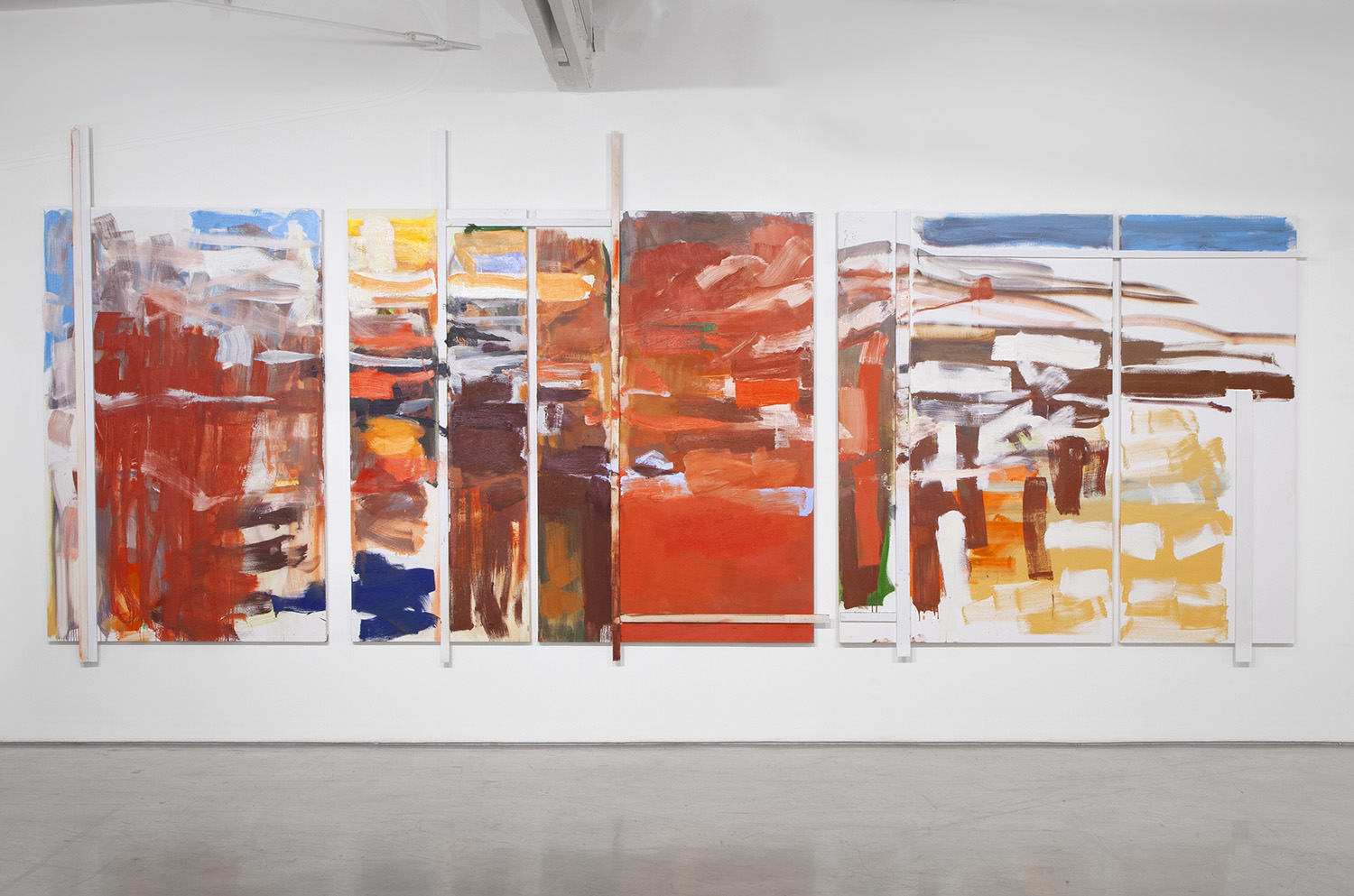
- Source: ARTFORUM
- Author: Ashton Cooper
- Date: SUMMER 2020
- Format: PRINT AND DIGITAL
RJ Messineo
at Morán Morán
RJ Messineo’s recent works emphasize painting as a process of accumulation. In ten pieces gradually assembled over twelve months, Messineo painted the view from her studio window, recording fluctuat-ing atmospheric and seasonal conditions in abstracted strokes, scribbles, and patches of color. The exhibition’s largest painting lent the show its title, “4:00 Universe.” That hour marks for Messineo a sweet spot in the studio, a moment of clarity before the day’s light dissolves. The title also illuminated a certain logic in the works on view: Each encompassed moments as small as 4:00 (a cloud drifting over the sun) and as big as the universe (the transition from winter to spring or the sun’s dip below the horizon), recorded within the same painterly vocabulary. The works suggested that the minute always contains something of the expansive, and vice versa. The artist’s records of observation are shifty, multiva-lent, inflected by affect, and open to interpretation, making clear that documentation is always a subjective abstraction.

RJ Messineo, 4:00 Universe, 2020, Oil and wood on canvas, 96 × 228 x 2.5 inches.
Messineo made Untitled (note), 2020, by loosely filling in, with long strokes of paint, a midday shadow that had fallen over a blank canvas’s surface. Here, the light is not simply translated by the painter but actually touches the painting itself, forming its own shape against the white surface. As the title’s parenthetical indicates, the painting is a notation, but Messineo’s swipes of gray-purple paint only roughly recall their source. That same scribbly gesture shows up amid a field of more densely applied marks in 4:00 Universe, 2020, a painting made up of five canvases, together measuring nineteen feet wide, that invokes Joan Mitchell’s monumental multipanel pieces. Whereas Untitled (note) encompasses a discrete moment, 4:00 Universe contains the gestures of several months’ time, forming an account of a winter season. At the painting’s center, heavy horizontal patches of mahogany are piled atop vertical strokes of marigold that rest over fields of ocher brown.
On top of several canvases, Messineo affixed thin wooden strips that reference the muntins of windowpanes. Art historian Amy Knight Powell has described the painting-as-window as a metaphor for expansion, signifying the picture’s desire to move into the world. That felt apt for Messineo’s paintings, which always seem to reach beyond their own edges. At the entrance to Messineo’s show, two paintings were installed side by side. On the left, Blue and Yellow and Leaves and Sunshine, 2019, was composed of shaped panels adhered to canvas and densely filled in with chunky frenetic blue and green strokes. With its boldly hued forms jutting out from the rectangular base canvas, the painting seemed to hover atop the wall; it asserted its boundaries even as it exceeded them. Sunset, 2019, on the right, also had added panels, but these were only partially brushed with washes of bright-orange paint. The white sections blended with the wall on which the piece hung, making the marks seem as if they were leaking out, seamlessly opening onto an expanse.
In historical easel painting, observation accumulated into illusion, but that was not the objective here. Rather, Messineo used abstraction to destabilize the boundaries between interior and exterior, painting and world, document and diary, feeling and image. The paintings drew attention to the accumulation of their materiality but also constantly pointed to the larger conditions of space and time that structured their making: material and atmosphere, endurance and change, 4:00 and universe.

